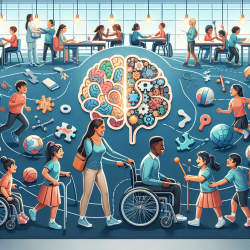Autism Spectrum Disorder (ASD) remains a complex and multifaceted condition that challenges healthcare professionals worldwide. Recent research titled "Autism Spectrum Disorder from the Womb to Adulthood: Suggestions for a Paradigm Shift" offers groundbreaking insights that could reshape our understanding and approach to ASD. This blog explores key findings from this research and provides actionable insights for practitioners aiming to enhance their skills and improve patient outcomes.
The Need for a Paradigm Shift
The traditional linear genetic model falls short in explaining the complexities of ASD. Instead, the research advocates for a more fluid conception that integrates genetics, environment, and epigenetics. This holistic approach acknowledges the interplay between immune activation, gut dysbiosis, and mitochondrial impairment/oxidative stress as significant factors affecting neurodevelopment during pregnancy.
Key Takeaways for Practitioners
- Primary Prevention: The "First 1000 Days," encompassing the embryo-fetal period and the first two years of life, are critical for neurodevelopment. Practitioners should focus on primary prevention strategies during pregnancy to mitigate risks associated with immune activation and oxidative stress.
- Interdisciplinary Approach: ASD is not solely a behavioral disorder but a systemic one involving various biological pathways. An interdisciplinary healthcare model that integrates psychoeducational and biological interventions is crucial.
- Personalized Care: The research highlights the importance of personalized, dynamic healthcare approaches that adapt to the evolving needs of individuals with ASD throughout their lifespan.
- Further Research: Encouraging further research into epigenetic markers and machine learning applications could lead to more precise diagnostic tools and interventions tailored to individual needs.
The Role of Machine Learning
The complexity of ASD requires innovative approaches like machine learning to analyze vast datasets and identify patterns that may not be evident through traditional methods. Machine learning can help develop predictive models that track different risk profiles, offering new avenues for early diagnosis and intervention.
Conclusion
The insights from this research underscore the need for a comprehensive and adaptive approach to ASD. By embracing these findings, practitioners can enhance their understanding and treatment of ASD, ultimately leading to better outcomes for individuals affected by this condition.
To read the original research paper, please follow this link: Autism Spectrum Disorder from the Womb to Adulthood: Suggestions for a Paradigm Shift.










